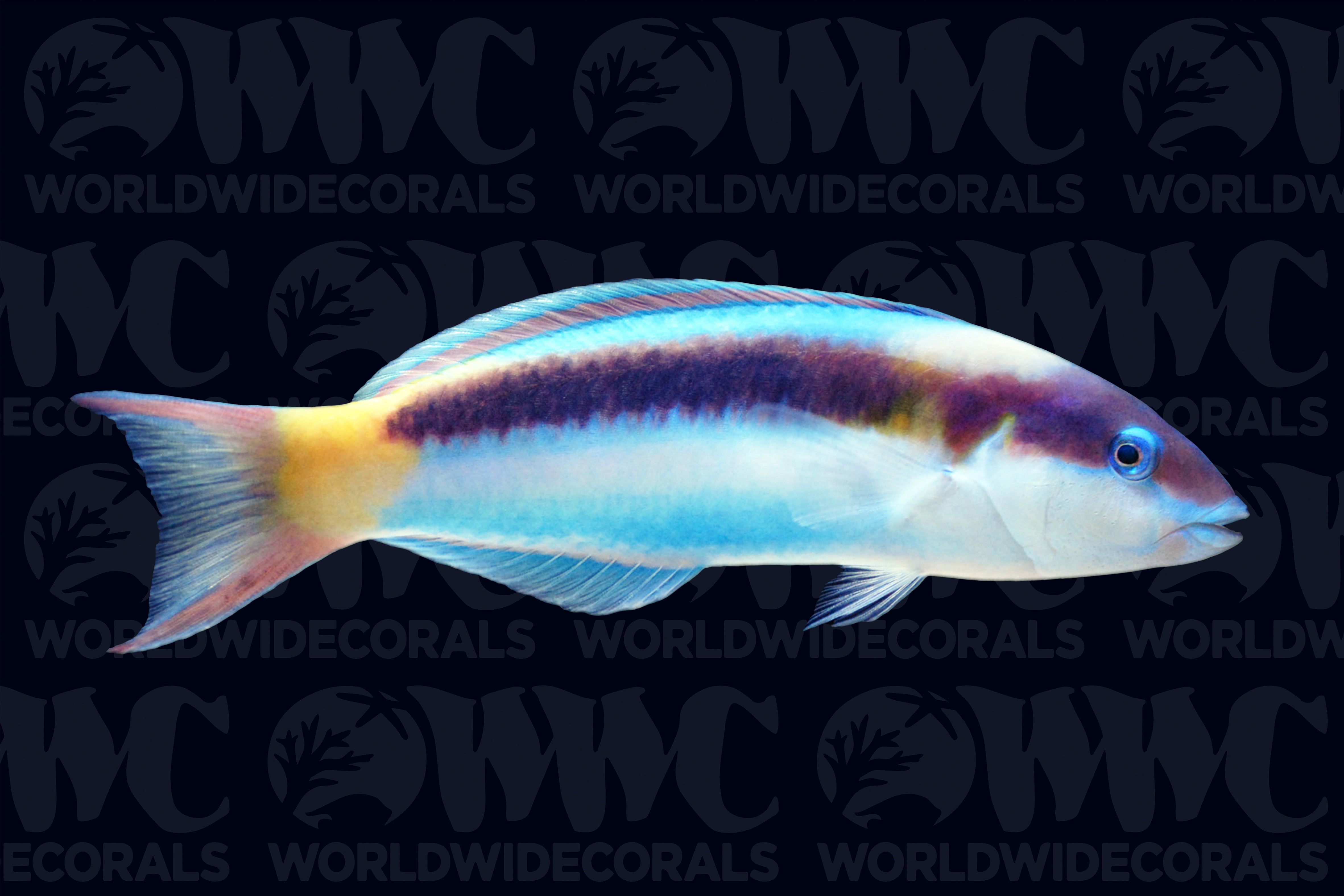Description
Thalassoma genivittatum
The Thalassoma Wrasses has exquisite coloration, hardiness and high activity levels that make them very desirable in the aquarium hobby. When young, these are relatively reef safe because they choose planktonic foods and parasites over invertebrates but adults are much more likely to snack on invertebrates. If possible, add this wrasse to the aquarium last since they can be territorial. When feeding them, give them a varied small meaty diet. Feeding them multiple times a day is recommended as they are very active and keeping them full will help keep them away from desirable inverts. In addition, they are known predators of a myriad of unwanted pests. As with all the other fish in the genus, they are capable jumpers at all stages of their life, so a covered aquarium is necessary. The Red Cheek Wrasse will add a great deal of activity to your aquarium. Adults will grow to be about 8 inches and will need an aquarium of about 70 gallons. They are found in small groups in rocky reefs of the Western Indian Ocean.
The Thalassoma Wrasses has exquisite coloration, hardiness and high activity levels that make them very desirable in the aquarium hobby. When young, these are relatively reef safe because they choose planktonic foods and parasites over invertebrates but adults are much more likely to snack on invertebrates. If possible, add this wrasse to the aquarium last since they can be territorial. When feeding them, give them a varied small meaty diet. Feeding them multiple times a day is recommended as they are very active and keeping them full will help keep them away from desirable inverts. In addition, they are known predators of a myriad of unwanted pests. As with all the other fish in the genus, they are capable jumpers at all stages of their life, so a covered aquarium is necessary. The Red Cheek Wrasse will add a great deal of activity to your aquarium. Adults will grow to be about 8 inches and will need an aquarium of about 70 gallons. They are found in small groups in rocky reefs of the Western Indian Ocean.
3 DAY GUARANTEE | Hassle Free | 100% Satisfaction | Online Orders Only


